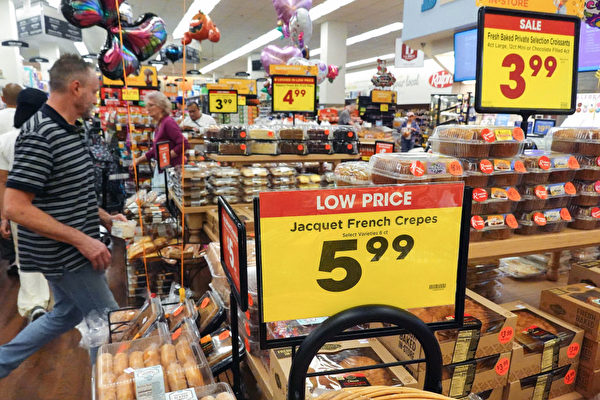The US consumer confidence index plunged sharply in September due to concerns about reduced hiring demand and a sluggish labor market.
The Conference Board reported on September 24 that the US consumer confidence index dropped from a revised 105.6 in August to 98.7 in September, marking the largest decline since August 2021.
All five components of the index in September – current business and employment conditions, future business and job market expectations, and income prospects – experienced declines, reflecting a broad sense of pessimism among consumers.
Chief economist Dana Peterson of the Conference Board stated in a release, “Consumers turned negative in their assessment of current business conditions, with their views on the current labor market conditions further deteriorating. Consumers are also more pessimistic about the future labor market conditions, business outlook, and income expectations.”
Labor market conditions were the focus of consumer attention in September. The Present Situation Index measuring current business and labor conditions dropped by 10.3 points to 124.3. The Expectations Index for short-term income, business, and job prospects also declined by 4.6 points to 81.7, slightly above the 80-point threshold, with a reading below 80 often indicating an impending economic recession.
Peterson remarked, “The deterioration in the main components of the index may reflect concerns over the labor market, reactions to reduced work hours, slower wage growth, and fewer job openings, even though the labor market remains quite healthy with low unemployment, minimal layoffs, and rising wages.”
Consumers aged 35 to 54 experienced the largest decline in confidence, as they are typically in their peak earning years and sensitive to labor market changes. Confidence levels also dropped across different income groups, particularly among households with annual incomes below $50,000.
The decline in consumer confidence, like other economic indicators, signals a slowdown in certain industries. For example, the US manufacturing sector saw its largest contraction in over a year in September due to weakening demand and reduced new orders.
The S&P Global Manufacturing Purchasing Managers’ Index fell to 47.0, the lowest in 15 months, indicating a rapid contraction in factory activity. Labor market pressures were also evident in manufacturing, with job positions declining at the fastest rate in fourteen years (excluding the COVID-19 pandemic period).
On the other hand, the services sector continued to exhibit robust growth, partially offsetting weakness in manufacturing. In September, the S&P Global Services Purchasing Managers’ Index held steady at 55.4, indicating a solid expansion.
The latest economic indicators released by the Conference Board showed a decrease in confidence among respondents regarding their household financial situations in September compared to August. Plans to purchase major items like appliances, smartphones, and laptops slowed down, while intentions to buy homes and vehicles slightly increased.
The report from the Conference Board indicated that the risk of an economic recession in September added more pressure on consumers.
Peterson noted, “The proportion of consumers expecting the economy to enter a recession in the next 12 months remains low, but those believing the economy is already in a recession have slightly increased.”
According to a report from S&P Global, concerns about inflation, a key issue for US voters, accelerated in September. The report revealed that consumers’ inflation expectations for the next 12 months rose to 5.2%. Coupled with worries about the job market and economic growth, this led to a more pessimistic outlook on the US economy.
Jamie Cox, Managing Partner at Harris Financial Group, stated, “The significant drop in consumer confidence is not a good sign. Consumers are clearly worried about the impact of the upcoming election, escalating global conflicts, and high food and credit costs.”
The sharp decline in consumer confidence also cast a shadow over consumer spending, a key driver of the US economy, even though it may help alleviate inflationary pressures.
Gina Bolvin, President of Bolvin Wealth Management Group, commented, “Remember, a drop in confidence could mean reduced consumer spending; decreased demand will continue to lower inflation. Over time, this will continue to aid consumers.”
As consumer concerns about the outlook for the labor market intensify, business leaders are scaling back their hiring plans. The Business Roundtable’s latest CEO Economic Outlook Survey indicated a decrease in hiring expectations for the next six months, reflecting growing caution among businesses amid cooling job market conditions and declining sales prospects.

